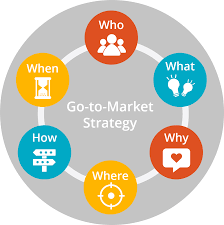As a channel, many of us are missing the personal contact we are used to with colleagues, suppliers and customers. Some of us are really missing our exhibitions and awards evenings, as they are a chance to network and celebrate together.
The reality is that due to current local restrictions, many of our events are now virtual.
From a marketing prospective there are pros and cons of both virtual and physical events for organisers, sponsors and attendees.
Physical Events
Attendees commit their time and expenses to attend. They have a reason to attend, something to research, people to meet and plan their time accordingly. Exhibitors know this and make themselves as visible as possible to meet as many prospects as they can, to recruit new partners and win new business. Organisers put the work in to bring this all together, providing educational seminars and sponsorships to deliver on requirements for both parties.
The great advantage of physical events is the face-to-face time spent with new resellers. Resellers can provide a quick overview about their requirements, get a feel for products and pricing and even see a quick demo of a portal. Suppliers can quickly establish needs and the size of the opportunity and decisions to proceed or dis-engage are made there and then. These face-to-face meetings can also happen over coffee, lunch or even in the bar, where direct questions are posed and answered, saving time on both sides.
The exhibition environment provides resellers with an education on current opportunities and the ability to compare potential suppliers in one afternoon in quick succession. Exhibitors get a chance to showcase their USPs and to talk more around the current opportunities and successful use cases they have been involved with.
Virtual Events
These events require less commitment and can easily be missed if something else comes up, especially if they know recordings may be available post-event. As attendees have not travelled and left the office for a day, they can easily get distracted with other business.
That said, virtual events are a great way of learning about market opportunities and comparing suppliers without leaving your laptop. You don’t need to worry about travel time or lunches, you are able to arrange quick meetings virtually, without leaving space in-between to find your next meeting.
For suppliers, the obvious difference with a digital event is costs. Physical events tend to cost more, but don't underestimate the cost of hosting a digital event.
You can speak to your audience without leaving home and don’t require an exhibition stand or merchandise. You also have the opportunity to gather further information from your attendees, such as engagement and can track poll question results and questions posed.
From my prospective, both types of events have their place but there is no comparison to being in a room full of your industry peers. The relationship building you can do face-to-face is valuable and much more difficult to achieve in the same timescales virtually. I look forward to getting back to live events but in the meanwhile am grateful for the opportunities to speak and meet with resellers virtually.
With any event, the more you put in, the more you get out.










